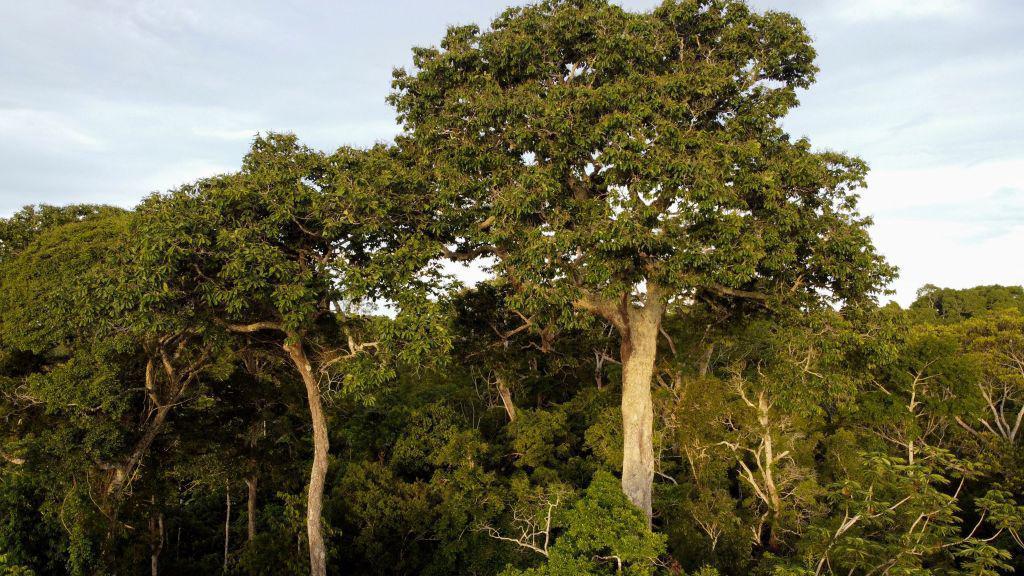Trees also absorb methane, the greenhouse gas, from the Earth’s atmosphere.
This is what an international team of scientists discovered, demonstrating for the first time how trees can eliminate this gas that contributes to global warming.
The discovery, researchers say, could have major implications in the fight against climate change.
When trees photosynthesize, their leaves absorb carbon dioxide (CO2) and store it as biomass in their trunks and branches, providing long-term carbon storage.
But this new research now reveals another important climate benefit of trees: microbes living in their bark can absorb methane on a scale equal to or greater than that in soil, another important sink (or removal process) for methane.
According to scientists, achieving significant reductions in atmospheric methane would have a rapid and significant impact on combating global warming.
More powerful than CO2
Methane is the second most abundant greenhouse gas after CO2 and is responsible for around 30% of global warming since pre-industrial times.
Over the past two decades, methane concentrations in the atmosphere have been increasing rapidly, mainly due to human activities.
This is a serious problem for the Earth’s climate because methane is 28 times more potent than CO2 at trapping heat in the atmosphere.

However, while CO2 can last in the atmosphere for hundreds of years, methane lasts about 10 years.
“This short atmospheric lifetime means that any changes to the sources of methane or the processes that remove it from the atmosphere (known as methane sinks) can have rapid effects,” explains Vincent Gauci, a researcher at the University of Birmingham’s School of Geography and Earth and Environmental Sciences and lead author of the study.
“If removal is improved, this can be a quick climate win that will help mitigate increasing climate change.”
Methane removal
Most methane emissions are removed by processes in the atmosphere.
But the soil is full of bacteria that absorb the gas and break it down to use as energy.
Soil was thought to be the only terrestrial sink for methane, but research has shown that trees may be just as important, or even more so, in removing the gas.
For the study, researchers analyzed trees from tropical, temperate and boreal highland forests.
Specifically, they took measurements in tropical forests in the Amazon and Panama; temperate broadleaf trees in Wytham Woods, in Oxfordshire, United Kingdom; and boreal coniferous forests in Sweden.

They found that methane uptake was strongest in tropical forests, likely because microbes thrive in the warm, humid conditions there.
On average, researchers say, the newly discovered methane absorption adds about 10% to the climate benefit provided by temperate and tropical trees.
Overall contribution
By studying the exchange of methane between the atmosphere and the bark of trees at different heights, they were able to show that while at ground level the trees probably emitted a small amount of methane, from a few metres upwards the direction of the exchange changes and methane from the atmosphere is absorbed.
To find out whether this process was of global importance, the researchers used a technique called terrestrial laser scanning to calculate the total surface area of forest tree bark worldwide.
They discovered that if the bark of all the trees in the world were spread out flat, it would cover the entire surface of the Earth.
Their preliminary calculations indicate that the total global contribution of trees is between 25 and 50 Tg (million tonnes) of methane each year, with the largest contribution taking place in tropical forests.
“This potentially represents a vast area for gas exchange between tree bark and the atmosphere, but this mechanism is still poorly understood,” says Professor Gauci.
While researchers stress that removing carbon from the global economy is key to tackling climate change, this ability of trees to absorb methane offers another nature-based tool to tackle the global climate problem.
Professor Gauci explains that there may be new ways to improve methane uptake, such as selecting trees that are particularly effective at removing the gas or modifying microbial communities in tree bark.
And he says nations could also be given greater incentives to preserve existing natural forests and prevent further deforestation.
“The main ways we consider trees’ contribution to the environment is through the absorption of carbon dioxide through photosynthesis and its storage as carbon,” says Professor Gauci.
“However, these results show a remarkable new way in which trees provide a vital climate service.”

Click here to read more stories from BBC News Mundo.
You can also follow us on Youtube, Instagram, TikTokX, Facebook and in our new WhatsApp channelwhere you’ll find breaking news and our best content.
And remember that you can receive notifications in our app. Download the latest version and activate them..
- Scientists solve mystery behind ancient baobabs, the “trees of life”
- Terra preta: the mystery of the origin of the Amazon’s “black gold”
